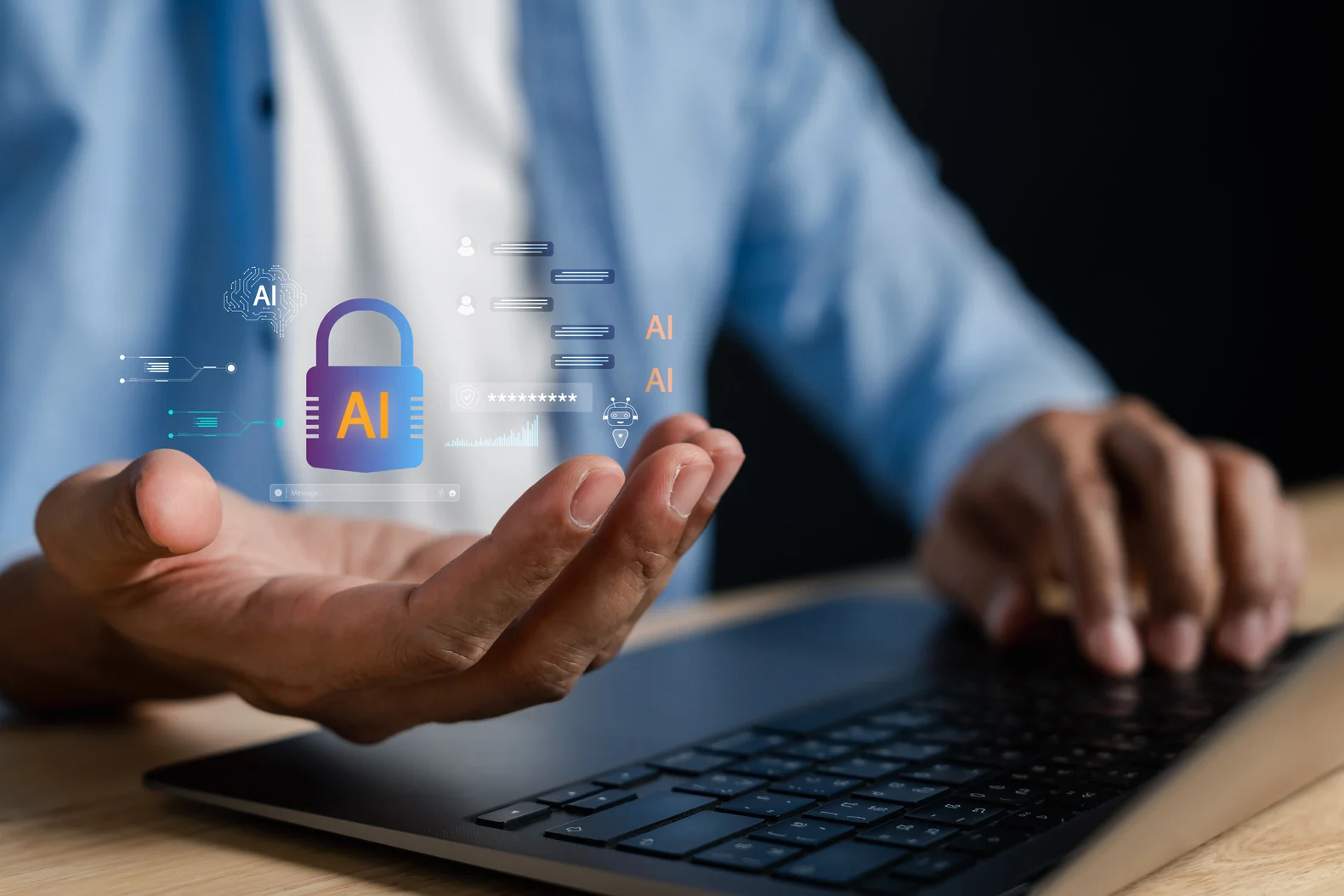Cyber threats are getting smarter, faster, and harder to detect. Traditional tools can no longer keep up with the scale and sophistication of attacks. This is where artificial intelligence steps in—offering the speed, adaptability, and learning ability needed to protect modern businesses.
At KIS Technologies Inc., we’ve integrated AI into our cybersecurity stack to tackle emerging threats head-on. Our solutions go beyond reactive protection; they proactively monitor behaviors, adapt to new threat patterns, and help keep our clients safe from data breaches, ransomware, and other attacks.
In this blog, you’ll learn:
- How AI powers next-gen threat detection and response
- The role of behavioral monitoring and pattern recognition
- Why AI is essential in today’s evolving threat landscape

How AI Is Changing Cybersecurity
AI has moved from being a theoretical enhancement to a frontline defense mechanism in cybersecurity. It helps detect, prevent, and respond to threats faster than any human team ever could.
Threat Detection with AI
AI excels at processing massive amounts of data in real time. This capability is essential for detecting suspicious activity that may signal a cyberattack. AI models are trained to identify anomalies and potential threats across millions of data points—far beyond human capacity.
For example, AI can analyze login patterns across a network and spot unusual access attempts even before any damage is done. It doesn’t rely on predefined rules alone; it evolves with each new dataset it processes.
Behavioral Analysis and Pattern Recognition
One of the most powerful applications of AI is behavioral monitoring. Instead of just watching for known threats, AI learns what “normal” activity looks like for users, devices, and networks. If something deviates from that norm, it raises a flag—even if the behavior doesn’t match any known malware.
This approach is critical for detecting zero-day attacks and insider threats. Unlike signature-based systems, AI can spot early warning signs based on behavior, not just code.
Real-Time Decision Making
Speed is everything in cybersecurity. AI reduces response time from minutes—or even hours—to milliseconds. AI tools can automatically quarantine affected systems, restrict suspicious access, or alert security teams the moment an anomaly is found.
These real-time decisions drastically reduce the window of opportunity attackers have to do damage. This automation also frees up human analysts to focus on strategic security tasks.
Predictive Analytics and Threat Forecasting
Beyond reacting to threats, AI is now being used to predict them. By analyzing threat intelligence feeds, user behavior, and system vulnerabilities, AI can forecast what types of attacks are likely to occur and where.
This enables businesses to prepare in advance, patch vulnerabilities early, and adjust defenses based on expected risks.
Key Applications in Cybersecurity Infrastructure
AI isn’t just one tool—it supports a range of cybersecurity capabilities across platforms and systems.
Network Security
AI helps maintain secure networks by monitoring traffic flow, identifying malicious packets, and managing access controls. Whether it’s detecting botnet activity or flagging abnormal internal traffic, AI strengthens network defense at every level.
Endpoint Protection
Each device connected to your network represents a potential entry point for attackers. AI-driven endpoint security tools continuously analyze behavior on devices to spot early signs of infection or compromise. These tools can automatically isolate affected devices before malware spreads.
The Human Element Still Matters
Despite all its power, AI isn’t meant to replace human cybersecurity teams. It enhances their capabilities and reduces fatigue by handling repetitive tasks and false positives.
AI + Humans = Stronger Security
The most effective cybersecurity programs combine AI automation with human judgment. Analysts can focus on investigating complex incidents while AI handles the noise. This partnership results in faster threat resolution and fewer missed warnings.
Challenges with AI in Cybersecurity
AI offers huge benefits, but it’s not without limitations.
False Positives and Training Gaps
Poorly trained AI systems can generate too many false alarms, overwhelming security teams. It’s critical to regularly update training datasets and fine-tune models based on real-world feedback.
Adversarial Attacks
Cybercriminals are adapting as well. They’re learning to manipulate AI models through adversarial inputs—subtle manipulations designed to trick systems into ignoring malicious activity. Countering this requires constant refinement of algorithms and threat models.
Data Privacy Concerns
AI systems rely on data, which means privacy becomes a concern. Organizations must ensure their AI tools comply with data protection regulations and are transparent about how data is used.
The Future of AI in Cybersecurity
As threats grow in volume and complexity, AI will only become more critical in keeping systems secure.
Ongoing Evolution
AI tools will continue to evolve with stronger neural networks, better data correlation, and deeper contextual understanding. Future systems will not just detect threats—they’ll adapt and neutralize them with minimal human input.
Widespread Integration
AI will no longer be a premium feature—it will be a core part of every security solution. From small businesses to enterprise networks, AI integration will become standard practice to stay secure in a hyperconnected world.
What You Should Do Now
If you’re looking to stay ahead of cybersecurity threats, now is the time to embrace AI as part of your defense strategy. Businesses that rely solely on manual tools are exposing themselves to risks that automated systems are built to detect and block instantly.
Our security stack includes AI-driven tools—see them in action. Reach out today to learn how KIS Technologies Inc. can help modernize your protection with intelligent, proactive systems.
